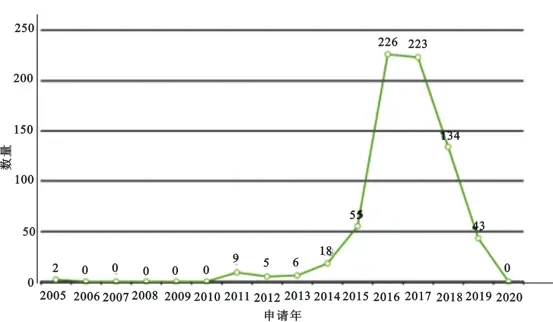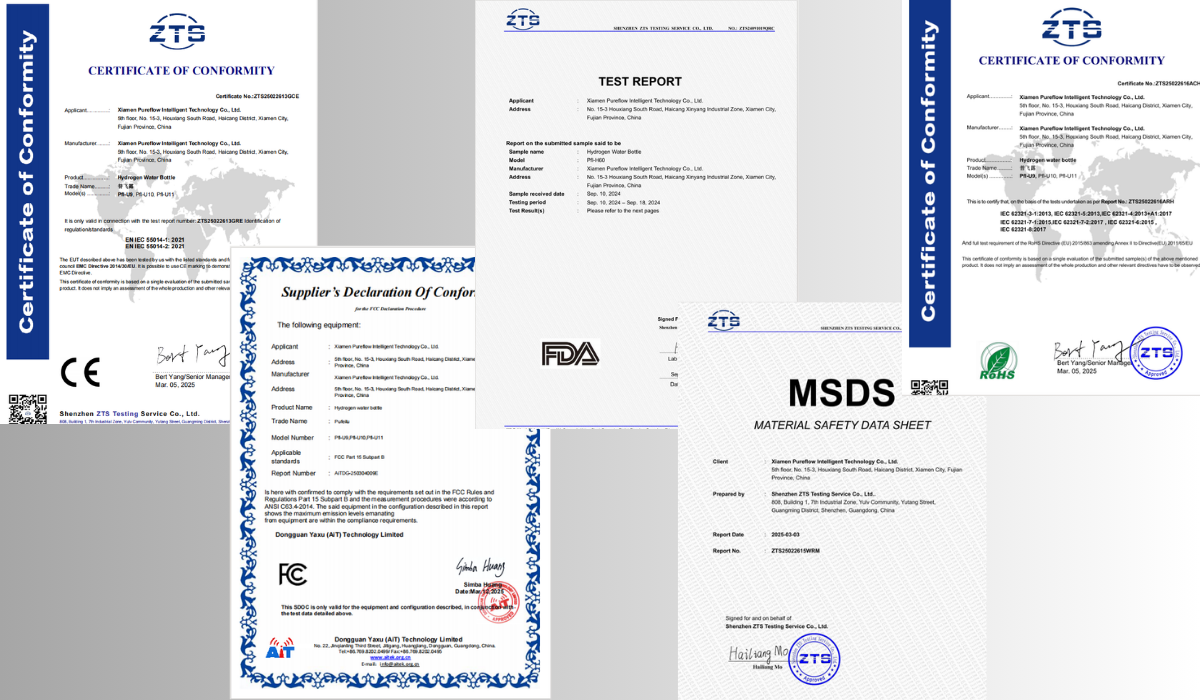Patent Analysis on Hydrogen-Rich Water Research
Patent Analysis on Hydrogen-Rich Water Research
Currently, hydrogen-rich water is widely applied in areas such as skin whitening, disease treatment, and drinking water. Patents, as the most effective carriers
of technical information, encompass over 90% of the latest technological intelligence. Therefore, analyzing patents related to hydrogen-rich water provides insights
into current research trends, major R&D entities, and hotspots.
1.1 Patent Application Analysis
Based on the Chinese Patent Database of the China National Intellectual Property Administration (CNIPA), using "hydrogen-rich water" as the keyword and searching
for Chinese patents published in the last 20 years (cut-off date: March 11, 2020), 721 relevant patents were retrieved after excluding design patents. The statistical
trend of Chinese patent applications over the past 20 years (Figure 1) shows that from 2005 to 2010, the number of applications was low, indicating an emerging phase
for related technologies. From 2010 to 2013, applications grew steadily, suggesting a stable development phase. After 2014, applications surged rapidly, signifying a
high-growth stage for research and application. The noticeable decline after 2018 may be attributed to the lag in patent publication. The earliest domestic hydrogen-rich
water technology patent, filed by Hayashi Kenji and Oowari Satoshi in 2005, was for a hydrogen-rich water production method and generator. Among the retrieved patents,
invention patents accounted for 296 (41% of the sample).

1.2 Patent Technology Analysis
Analysis of the patent applications and their technical content reveals the development trends and research hotspots for hydrogen-rich water technology. Many patents
focus on its preparation. Early patents involved using sintered magnesium granules added to beverage water to produce hydrogen-rich water for drinking or topical
application to improve age spots and wrinkles. Later methods employed physical techniques, first removing large amounts of oxygen and other gases from water before
infusing it with hydrogen to create hydrogen-rich beverages for the food and beverage industry. Subsequently, water electrolysis devices were developed to produce
hydrogen-rich water, enhancing convenience for daily use. Further advancements led to hydrogen-generating sticks, enabling users to easily and effectively convert regular
drinking water into hydrogen-rich water. As preparation technologies matured, hydrogen-rich water machines and cups emerged.
Applications covered in these patents mainly focus on disease treatment, cosmetics, and healthcare. With its growing acceptance in these fields, research priorities have
shifted towards improving the quality and safety of hydrogen-rich water, expanding its application areas, and reducing production costs. Examples include: Xi'an Jiaotong
University disclosing a method for cheaply preparing long-lasting hydrogen-rich water; the Second Military Medical University validating, through animal experiments,
hydrogen-rich water as a preventive therapeutic for experimental autoimmune encephalomyelitis; and the Shanghai Academy of Agricultural Sciences discovering a method
using hydrogen-rich water to extend the shelf life and improve the quality of Hypsizygus marmoreus (Bunashimeji mushroom).








